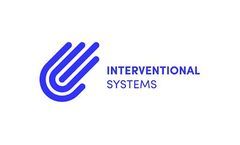Surgery Gets Navigation Articles & Analysis
14 articles found
The aim of the project was to develop a Polish complementary system of molecular surgical navigation for the treatment of ...
The challenge An industry-leading medical device company required the capability to automatically generate an accurate 3D model of complex patient-specific anatomies The anatomical model was needed for planning challenging surgical navigation procedures The pre-existing solution was slow and not robust, requiring extensive and time-consuming manual editing by the interventionist Our ...
Optics and medical devices have a long history and partnership. Since the invention of the microscope in the late 1500s to mid-1600s, the interest and desire to “see” into the human body to diagnose illness and subsequently repair it has only intensified. Optics in modern medical devices fall into two categories: those used for diagnosis of illness, and those which are therapeutic or ...
Intellijoint Surgical is proud to announce a new, optional feature to the Intellijoint KNEE system. It helps provide quantitative measurements of femoral and tibial rotational alignment. Originally released back in 2020, Intellijoint KNEE is the second application following the company’s flagship product, Intellijoint HIP. The Intellijoint team has continued to innovate and expand ...
Our Value-Based Robotics series advances towards the actual clinical use of robotics and issues concerning practicality and surgeon onboarding and training. It is generally accepted that robotic surgical systems enable minimally invasive surgery and improve outcomes, including shorter recovery times, less scarring, and reduced healthcare costs. This being said, the jury is still out on whether ...
Computer-aided surgery is used in a daily clinical workflow for safer surgical interventions. Navigation systems work based on a tracking model, which helps in the correlation of a patient’s coordinates to the preoperative or intraoperative digital medical imagery. There are two main types of navigation systems available in the market today. They are the infrared (optical) systems and ...
To confidently perform a spinal fusion and screw fixation with excellence surgical navigation is consistently used as a powerful tool. Surgical Navigation provides real-time guidance and precise measurements for accurately placing the pedicle screws to help stabilize the spine. A preoperative CT scan gives a detailed visualization of the structure decreasing the potential for implant-related ...
The long-term success of dental implant surgery is dependent, in part, on accurate planning and placement of the implant.1 Currently, there are many digital planning systems available to aid the clinician in pre-operative treatment planning, although the main challenge with these planning systems is to accurately transfer the digital plan to the clinical situation. Most systems involve taking a ...
The following case was performed at the Pacific Dental Convention’s Live Surgical Stage held March 8th, 2018 in Vancouver, BC. The patient is a healthy 58 year old male with no known allergies or medical contra-indications to dental treatment. Patient presented with a Class III malocclusion for which he received both orthodontic and oral surgery consultations; however, he was not ...
INTRODUCTION The replacement of a single central incisor may be one of the most demanding implant treatments clinicians face. Still, clinicians have been able to achieve aesthetic results in these challenging cases through excellent treatment planning and meticulous surgical placement. The following case study highlights how Dr. Zokol was able to integrate Inliant® into his treatment plan ...
INTRODUCTION The goal of the implant surgeon is to place the implant in the ideal position, to support the prosthesis for the best long term prognosis, while managing important anatomical landmarks. With the aid of Cone Beam CT scans the implant surgeon is able to evaluate, in three dimension, the ridge, important anatomy, as well as pre-plan implant placement in the most ideal position. ...
MOTION study will quantify new technology’s impact on radiation exposure In December, Cleveland Clinic vascular surgeons successfully completed the first surgical case in the MOTION clinical trial of a new non-radiation-based surgical navigation platform for endovascular aortic interventions. The trial is a feasibility study of the Intra-Operative Positioning System (IOPS™) from ...
A surgical C-arm and an Optical Navigation system works together in synergy to facilitate a Spinal surgery platform. Continuous guidance of surgical tools relative to any pre and intra-operatively acquired 2D and 3D datasets assures reduced operative time, less radiation, and enhanced precision. Why should you consider easyNav for C-arm integration? Calibration and Navigation of other ...
Summary: In treating brain cancers, neurosurgeons face a critical decision: remove too little tissue and risk fatal recurrences or remove too much and cause profound neurological damage. Presently, they rely on pre-operative surgical navigation technologies, such as MRI, in order to determine the contours of the cancerous tissue to be safely removed. These surgical navigation systems, in ...









